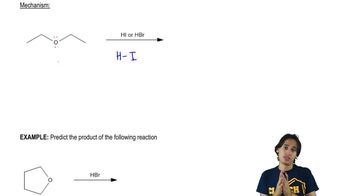Rank the following alkyl halides from most reactive to least reactive in an SN1 reaction:
2-bromo-2-methylpentane, 2-chloro-2-methylpentane, 3-chloropentane, and 2-iodo-2-methylpentane.

 Verified step by step guidance
Verified step by step guidance Verified video answer for a similar problem:
Verified video answer for a similar problem:



 1:49m
1:49mMaster Drawing the SN1 Mechanism with a bite sized video explanation from Johnny
Start learning